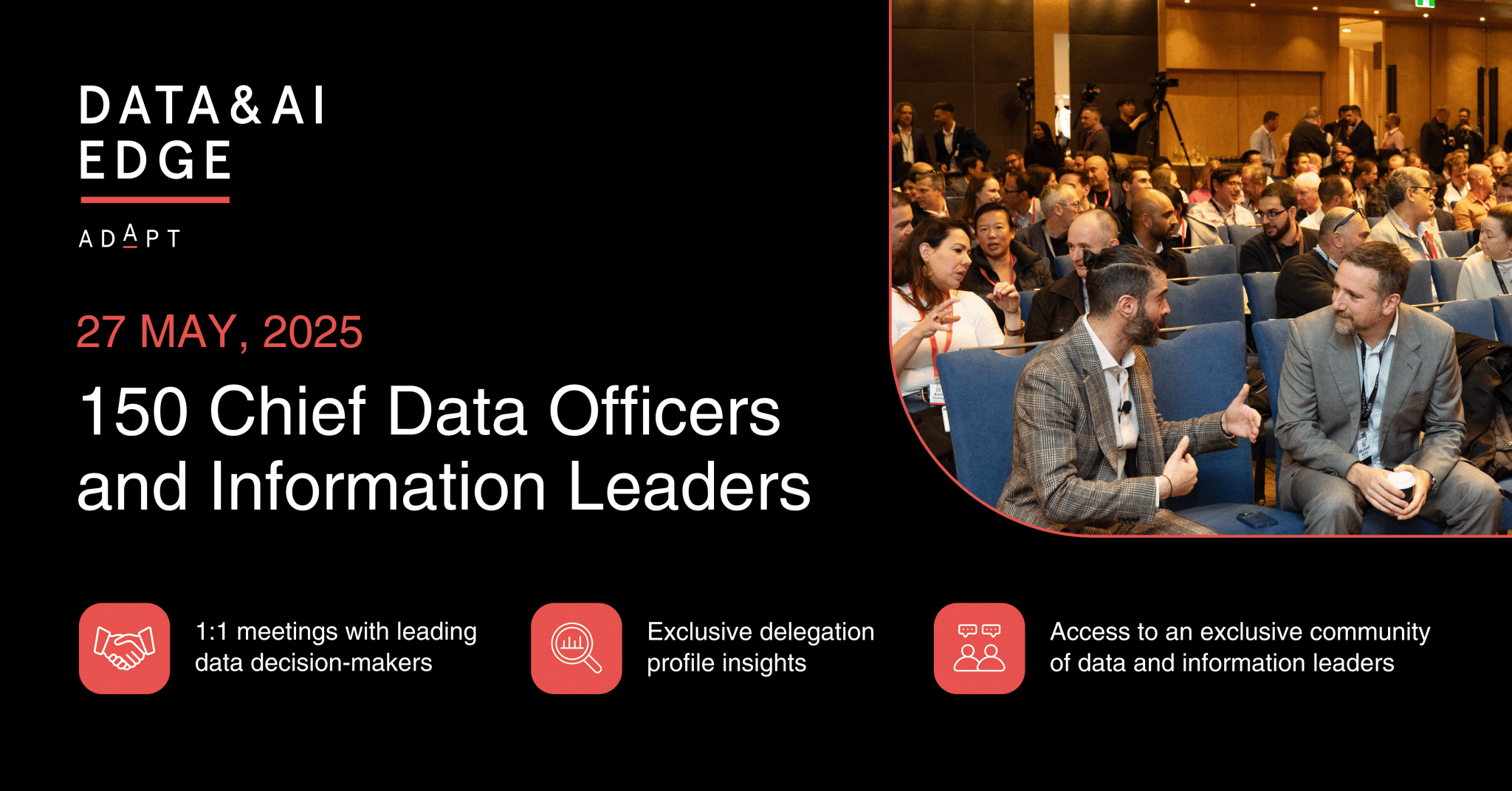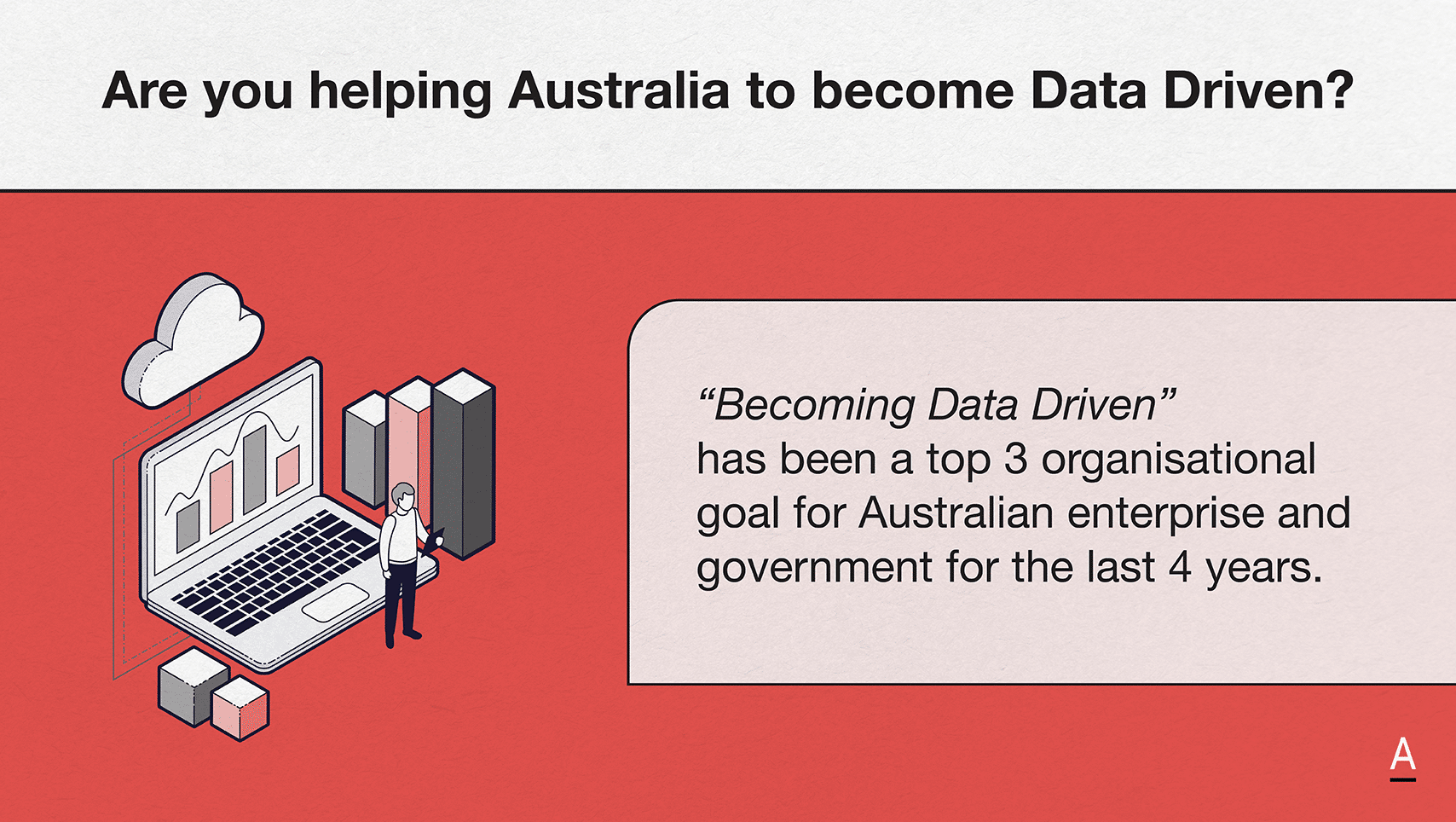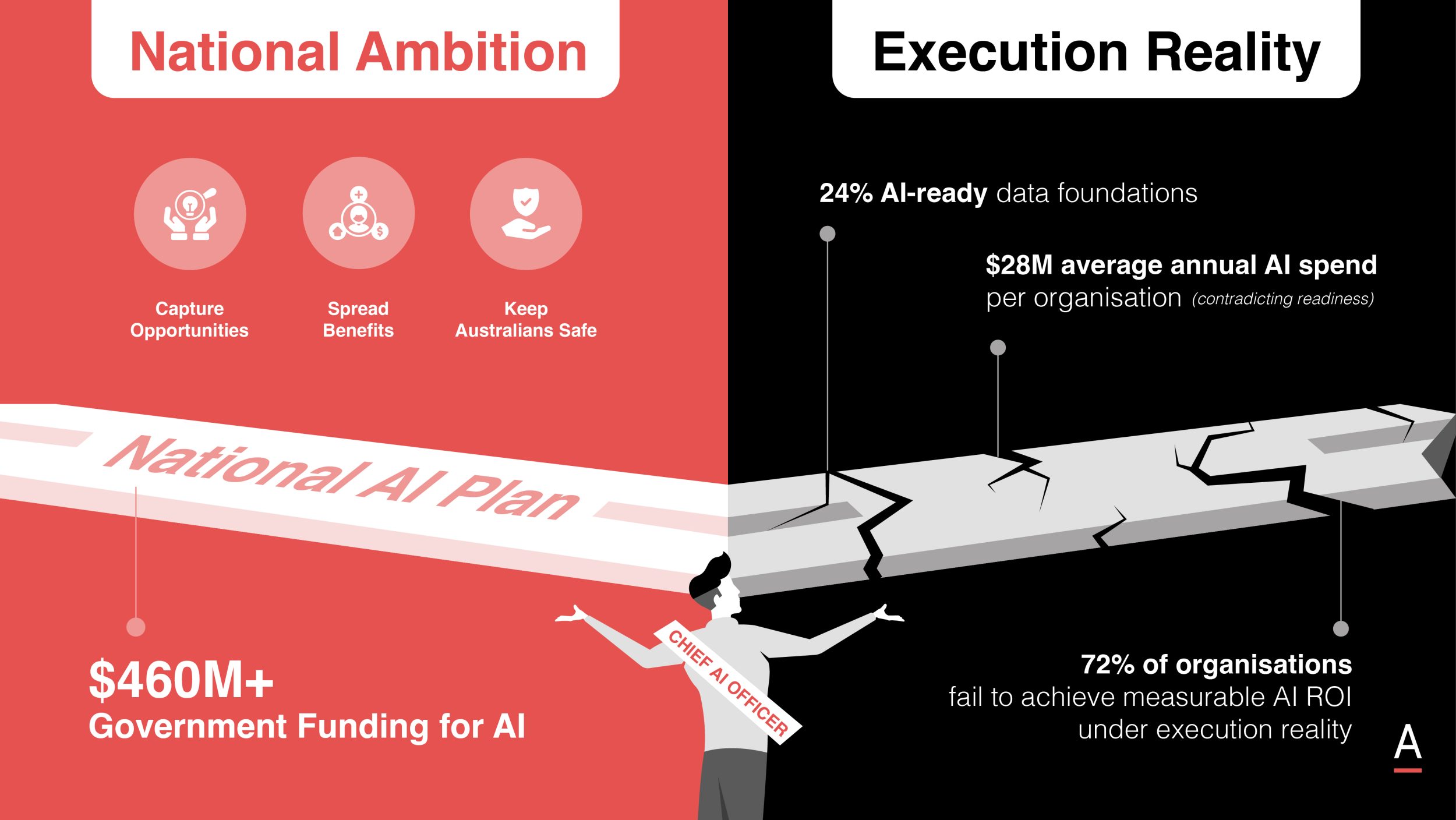How the rise of Chief AI officers will define Australia’s AI future
With AI investment surging, Australian enterprises face challenges in governance, leadership, and execution. The Chief AI Officer is emerging as a vital role to bridge the gap.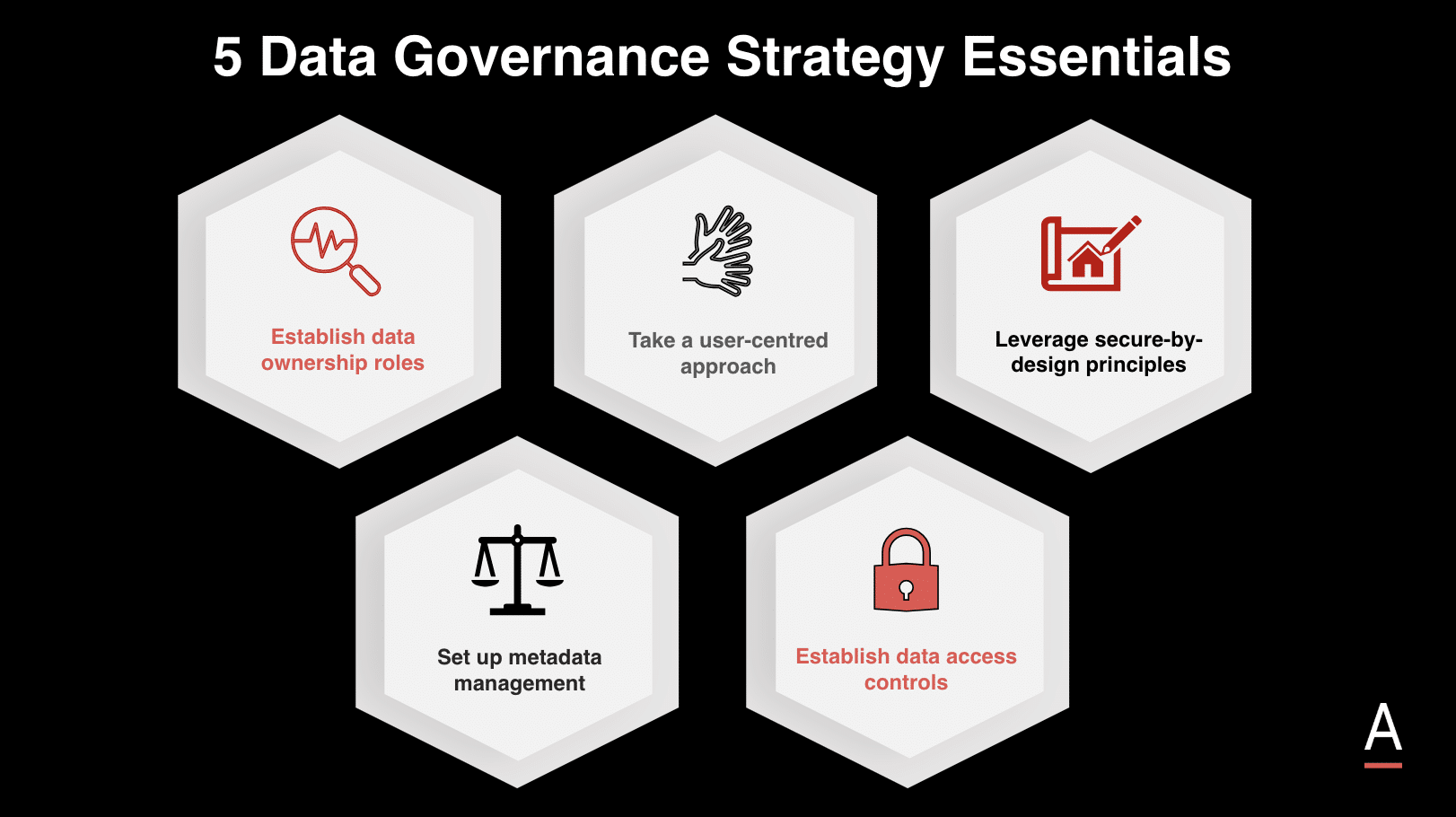
With AI investment surging, Australian enterprises face challenges in governance, leadership, and execution. The Chief AI Officer is emerging as a vital role to bridge the gap.
AI adoption in Australia is expanding rapidly, with 70% of CIOs ramping up investment in generative AI.
Yet, despite increasing budgets, many organisations struggle to translate these investments into real business value.
Without clear leadership, structured governance, and workforce readiness, AI remains underutilised, failing to deliver the expected returns.
While AI has shifted from an experimental tool to a strategic priority, many enterprises still lack the capability to implement it effectively at scale.
To bridge this gap, the role of the Chief AI Officer (CAIO) is emerging—a dedicated leader responsible for ensuring AI adoption is aligned with business objectives, operational efficiency, and measurable outcomes.
Australia is shifting from AI ambition to action but readiness is uneven
AI has moved beyond a distant ambition and is now reshaping business strategies across industries.
However, ADAPT’s February 2024 survey of 160 Australian CIOs and CDAOs reveals critical gaps in AI readiness, governance, and execution.
In his presentation at ADAPT’s Data & AI Edge event, Dr. Shivaji Dasgupta, Group Chief Data and Intelligence Officer at large European banks, emphasised that data strategies should be viewed as long-term investments rather than immediate cost centres, focusing on enhancing customer experiences and revenue generation.
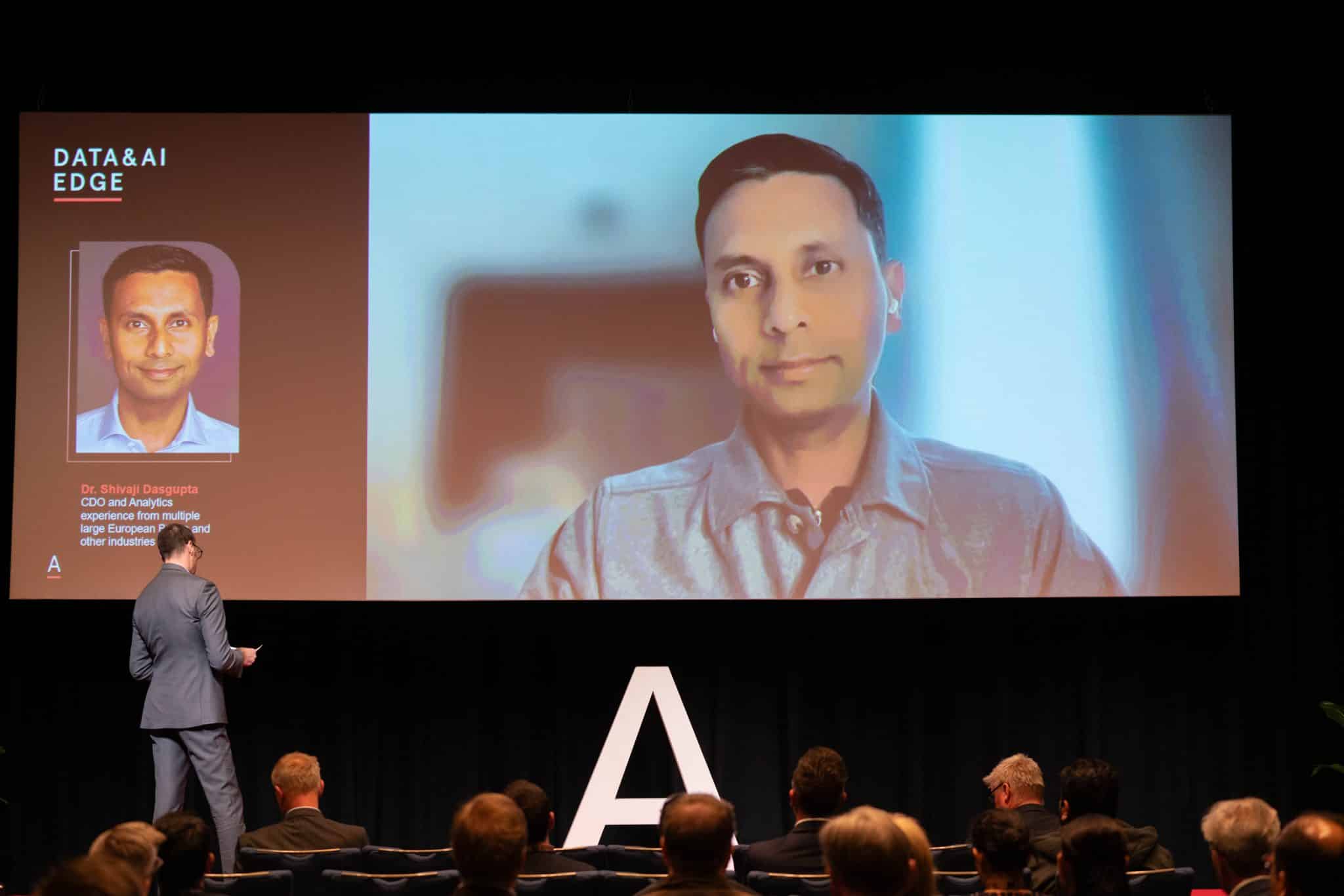
This shift is critical as AI adoption accelerates, requiring enterprises to prioritise sustainable data management rather than short-term AI experimentation.
AI investment is up, but leadership is needed to deliver outcomes
Despite 70% of CIOs increasing spending on generative AI, many organisations lack a clear framework for measuring impact.
Only 13% report achieving real value from their AI initiatives, while 50% struggle to track return on investment (ROI).
Without strong measurement frameworks, AI projects risk becoming cost centres instead of drivers of efficiency and innovation.
Aligning AI with business objectives is a key factor in success.
Research from Dr Michael G. Kollo, Director of AI at ADAPT, shows that CIOs who prioritise cost reduction as an AI goal report an 86% success rate, compared to just 9% for those who don’t.

This reinforces the need for AI to deliver tangible business outcomes rather than serve as an experimental tool.
Fragmented ownership is undermining AI success
AI leadership remains fragmented.
While many CIOs and CDAOs oversee AI initiatives, one-third of CDAOs report having little influence on AI strategy, limiting their ability to drive adoption.
Only 25% believe their organisations have the internal capability to build and train AI models, exposing a lack of in-house expertise.
In a Data & AI Edge panel discussion, Joanna Gurry, Executive of Data Platforms at NAB, cautioned against assuming data executives can transition into AI executives overnight.
She highlighted the need for a multidisciplinary approach, involving mathematicians, coders, architects, analysts, and security experts to deploy AI effectively.
AI governance issues further compound these leadership gaps.
While organisations recognise the need for structured governance, execution is inconsistent.
Nearly 48% of surveyed CDAOs admit their companies lack well-defined AI use cases for 2024, making large-scale implementation difficult.
These challenges highlight why AI leadership cannot be an afterthought.
As AI becomes embedded in core business functions, the Chief AI Officer will be essential in ensuring strategic alignment, accountability, and governance.
Why CAIOs must drive enterprise AI maturity
Closing the AI maturity gap will require dedicated leadership to move beyond siloed efforts and embed AI into core business functions.
While adoption is accelerating, progress varies significantly across Australian enterprises, and many still fall short of achieving transformational outcomes.
Dr Peter Weill, MIT Sloan senior research scientist and MIT CISR chairman, categorises enterprise AI maturity into four stages:
- Early-stage: AI remains experimental and disconnected from financial impact.
- Mid-level: AI delivers limited efficiencies but remains siloed within IT teams.
- Advanced: AI integrates with business processes, improving financial performance.
- Fully AI-driven: AI is embedded in decision-making, automation, and competitive differentiation.
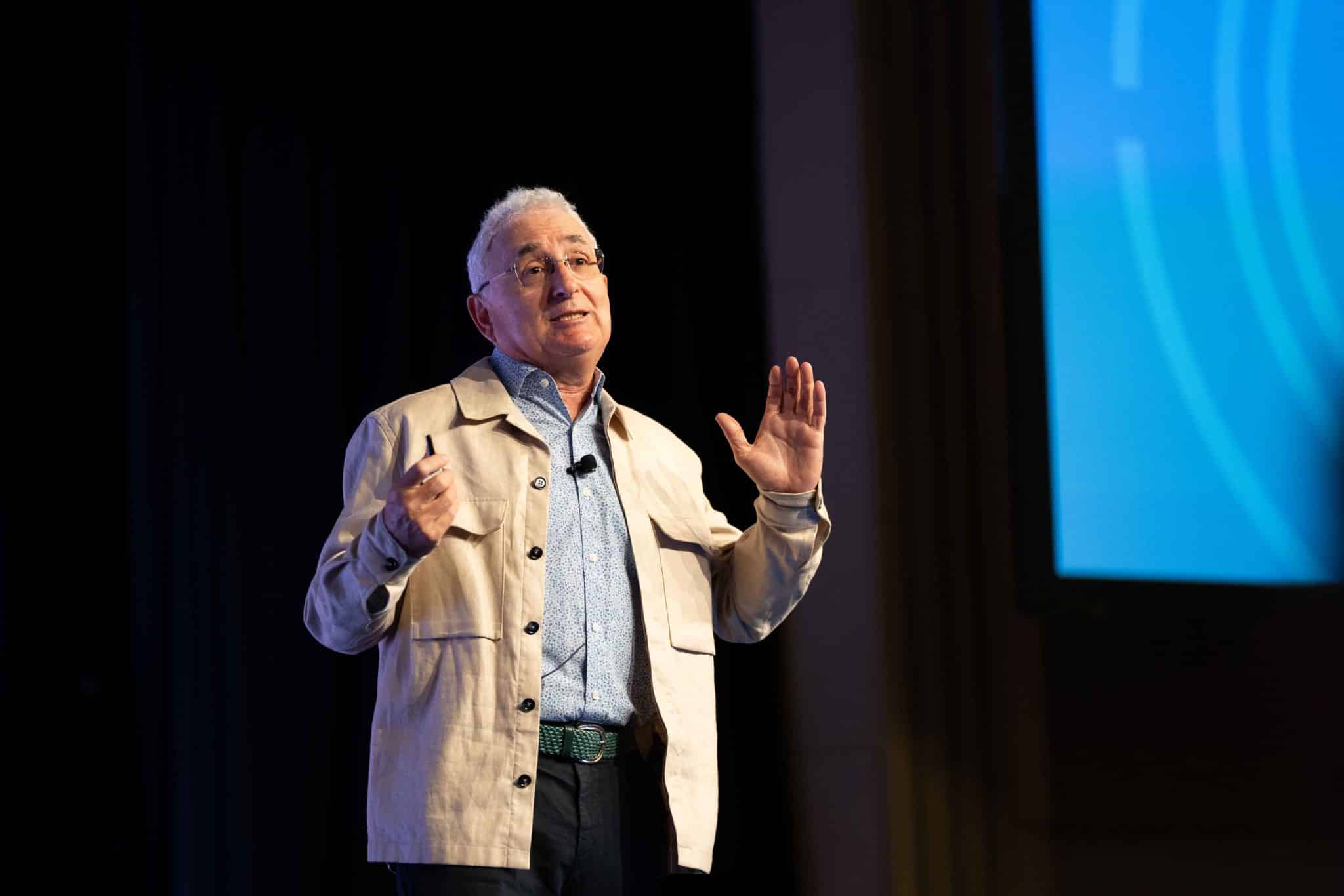
Most Australian organisations are between stages two and three, meaning AI delivers only incremental efficiencies rather than transformational impact.
To progress, companies must strengthen governance, enhance workforce readiness, and integrate AI at an enterprise level—all responsibilities that fall under the CAIO.
The CAIO is critical to mitigating AI risk
Mitigating the risks of AI requires a central leader who can enforce structured data governance, security, and compliance from the top down.
AI is only as effective as the quality of data it operates on.
However, many organisations struggle with fragmented data environments, security concerns, and governance failures.
Without structured data governance—from creation to security and accessibility—AI initiatives risk being inefficient, inaccurate, and non-compliant.
ADAPT research confirms this: organisations with strong data governance frameworks are four times more likely to be AI-ready.
Companies with high levels of data literacy are nine times more likely to succeed in AI adoption.
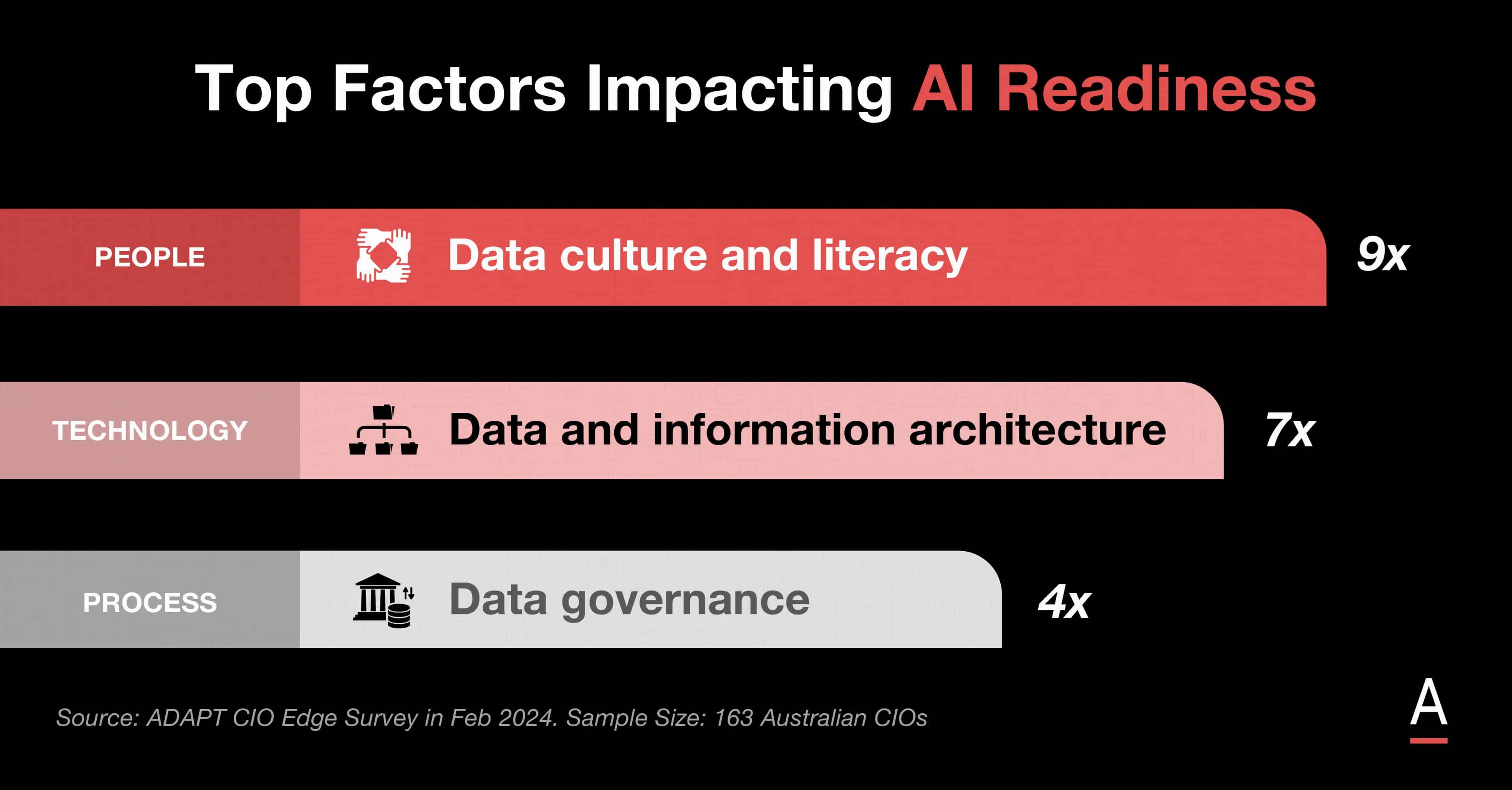
Unchecked AI adoption brings significant risks, including bias, security vulnerabilities, and regulatory compliance.
One key risk is data sovereignty.
DeepSeek’s R1 model, for example, offers cost-effective, reasoning-centric AI capabilities.
However, Gabby Fredkin, ADAPT’s Head of Analytics & Insights and Dr Michael Kollo caution that foreign AI models may introduce security vulnerabilities, compliance risks, and reliance on external providers.
CIOs and CTOs must carefully assess these risks before integrating third-party AI.
Michelle Dennedy, Chief Data Strategy Officer at Abaxx Technologies, stresses that AI governance must embed privacy, ethical decision-making, and data protection within digital strategies.

She advises organisations to adopt clear frameworks like ISO or NIST standards and proactively manage structured and unstructured data to ensure transparency, compliance, and business value
Similarly, Claudine Ogilvie, former CIO at Jetstar and CEO of HivePix, stressed the importance of cautious, strategic AI integration.
She advocated for business-led AI projects with strong governance and data quality to manage risks while maximising impact.
To build a strong AI foundation, organisations must adopt a structured data governance framework, which includes five key steps:
- Assess the current data landscape for gaps in quality, security, and accessibility.
- Develop a governance strategy that aligns data with business goals.
- Optimise information architecture to map data flows and eliminate inefficiencies.
- Evaluate and enhance IT tools to support AI-ready infrastructure.
- Adopt an agile governance model that evolves alongside AI advancements.
A strong data strategy must be led from the top, making the Chief AI Officer essential in ensuring AI deployments are built on high-quality, reliable data.
Workforce readiness for AI requires executive stewardship
A lack of AI expertise and digital proficiency is one of the most persistent barriers to successful AI adoption.
However, preparing the workforce for AI is not just a training issue—it demands visible, consistent leadership to guide cultural change, build trust, and drive capability uplift at scale.
ADAPT’s CIO Edge findings reveal that while 43% of CIOs see the need to strengthen leadership’s digital expertise, only 48% believe their employees are digitally proficient.
Workforce training and AI literacy programs are crucial for successful adoption.
However, Dr. Michael G. Kollo notes that resistance to AI tools among experienced employees stems from fears of losing autonomy or job security.
Negative narratives surrounding AI contribute to a lack of enthusiasm and buy-in, further hindering adoption.
Addressing these cultural and psychological barriers is just as critical as technical training.
Addressing these cultural and psychological barriers is just as critical as technical training.
To overcome this, some organisations are taking a structured approach to AI integration, ensuring employees are both supported and empowered.
In an interview with ADAPT’s Principal Research Analyst Peter Hind, Dayle Stevens, Executive – Data and AI at Telstra, shared how Telstra is embedding AI across all facets of the company—not only in products but also in internal decision-making.
This involves upgrading data and AI tools to ensure accessibility and effectiveness, as well as managing Telstra’s extensive data landscape to enhance security and operational efficiency.
Complementing this approach, Leigh Gibson, Group Owner AI Enabled Employees at Telstra, highlighted how Telstra introduced a Responsible AI training program for all 18,000 employees.
This governance-first approach led to 80% adoption of Microsoft Copilot, with employees saving three to four hours per month on average.
Similarly, Sandy Aitken, Technology Transformation Director at Cleanaway Waste Management, suggested recruiting talent from gaming communities and problem-solving roles to bridge the AI skill gap.
AI adoption depends on executive commitment to workforce readiness.
Quantum computing will reshape AI and CAIOs must guide the transition
While AI is advancing rapidly, its limitations remain tied to classical computing constraints.
As quantum computing emerges, CAIOs will play a critical role in assessing readiness, aligning enterprise data strategies, and guiding responsible integration.
At Data & AI Edge, Claudine Ogilvie, CEO at HivePix, discussed how quantum computing could transform AI capabilities.

Unlike classical computers, quantum processors can solve complex problems exponentially faster, unlocking new AI potential in finance, drug discovery, and environmental modeling.
However, quantum adoption is still in its early stages, requiring not only significant investment and infrastructure but also robust governance and strategic foresight—areas where strong data and AI leadership will be essential.
How AI and data chiefs across sectors are delivering measurable AI outcomes
From legal compliance to personalised customer experiences, AI is transforming operations across industries.
Australian organisations are leveraging AI to enhance decision-making, streamline processes, and maintain security while navigating ethical and regulatory challenges.
Clear leadership is helping legal firms use AI to meet compliance and manage risk
In regulated industries like law, AI must enhance governance and compliance rather than just automate tasks.
Dhivian Govender, Head of Digital Data & Analytics at Slater & Gordon Lawyers, shared how AI being used to support legal decision-making, strengthen regulatory compliance, and improve data security.
The firm focuses on ensuring ethical AI adoption and engaging end-users to drive trust in AI-driven insights.
Real-time support and inclusivity as education outcomes demonstrate the value of leadership and governance
AI is also reshaping education, with Sinan Erbay, CIO at RMIT University, leading the development of Virtual Assisted Learning (VAL), an AI-powered tutoring platform.

The platform was rapidly deployed in six to eight weeks and provides real-time feedback, automated tutoring, and translation tools for international students.
Sinan stressed that AI in education must be built with security and data privacy in mind, ensuring responsible AI usage.
Responsible AI in finance shows how leaders can reduce risk and drive value
AI’s role in financial services extends beyond automation—it must also enhance regulatory compliance and risk management.
Michael Fugaro, CIO at SW Accountants & Advisors, talked about how the firm is balancing AI-driven efficiency with security and governance.
By leveraging Microsoft Copilot alongside custom AI solutions, the firm has streamlined operations while adhering to strict data privacy laws.
Strategic AI implementation is driving more natural and effective customer interactions
Anthone Withers, former Chief Revenue Officer at Closed AI, discussed how conversational AI is transforming customer interactions.
When deployed with purpose and oversight, AI-powered chat systems can significantly enhance both efficiency and personalisation in customer service.
As natural language processing capabilities improve, these systems are enabling more human-like interactions at scale.
Importantly, conversational AI is not limited to front-end experiences—it is also playing a growing role in automating broader business processes, a trend that highlights the need for strong leadership to align these tools with customer expectations, brand integrity, and operational goals.
The CAIO as the key to Australia’s AI future
AI is now a strategic enabler, but investment alone does not guarantee success.
ADAPT research and industry leaders emphasise, AI success depends on governance, workforce readiness, and leadership alignment.
The Chief AI Officer will be pivotal in ensuring AI investments drive measurable outcomes, align with business priorities, and are deployed ethically.
As AI adoption accelerates, the key question is no longer whether to invest in AI, but who will lead its future. The organisations that appoint strong AI leadership today will shape the business landscape of tomorrow.
At Data & AI Edge, ADAPT’s premier conference, over 150 Chief Data Officers and AI leaders from organisations responsible for 1/5 of Australia’s GDP will gather to address the evolving landscape of AI adoption and leadership in the region.
Sponsors will get exclusive 1:1 meetings with leading data decision-makers, access to detailed delegation profiles, and opportunities to establish thought leadership through keynotes and panels.
Register your interest or learn more about becoming an Data & AI Edge sponsor.
